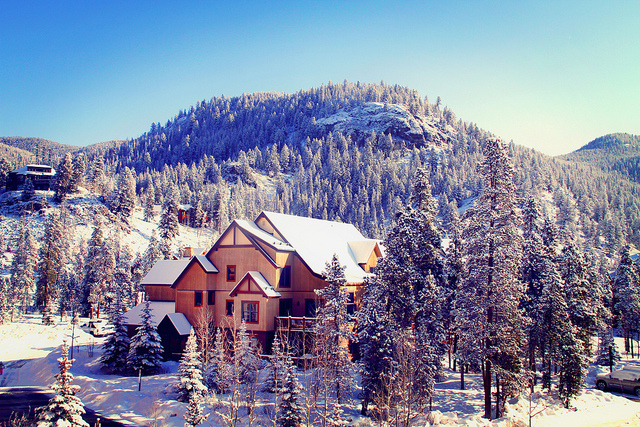
The housing boom may be over in the United States, but things look very different when you take a step back. Since the 1940s, housing has grown at about 20 percent each decade. And while the current recession may have slowed things down, we’ll have to start building more houses eventually if we’re to house the 120 million more people by 2050. The decades-long housing boom magnifies in intensity when you start looking around national parks, wilderness areas, and national forests, as a recent paper in the Proceedings of the National Academy of Science did. While there were just 14.9 million housing units within 50 kilometers of a protected area in 1940, there were 61.9 million units in that same buffer by 2000. And not only have the raw numbers increased, so too has their share of all American housing.
It’s no surprise that people want to live near parks. Clean air, open space, and gorgeous scenery draw people in as tourists and bring them back as prospective property buyers. Retiring Baby Boomers, freed of their work commitments, have been particularly drawn to the borders of national parks, forests, and wilderness areas. Even working-age people—many willing to suffer through a long commute to live near natural beauty—have gravitated towards protected areas.
None of this would be a big problem if we didn’t mind clustering our houses together, limiting our impact on the land around us. But the reality is no one moves to the country to live in an apartment building. People buy a handful of acres, erect a house a good distance from the road, and string in a long driveway.
Though it’s tempting to think the environmental impacts of a house stop when grass gives way to trees, the reality is that houses cast a shadow far larger than their physical footprint. Roads, utility lines, and driveways dice up the landscape. This fragmentation reduces species’ ability to travel out of the now-noosed protected areas, trapping them in reserves that may not fulfill their needs. Houses also bring hordes of exotic plants and animals, including pets, which often prey on native fauna. All of these factors—and more—create disturbances that can affect protected areas, though they may be miles away.
The authors of the study cite a few examples of how wilderness housing has already changed the habitat in and around protected areas. In the east, the Great Smoky Mountains National Park is choked with pollution. In Colorado, the number of visitors to the Mount Evans Wilderness Area has increased so much that the Forest Service now requires permits. Wildfires in Cleveland National Forest near San Diego, most of which are set by humans, have skyrocketed in number, pushing out the native coastal sage scrub and ushering in exotic grasses. In Michigan, houses peppered within the boundaries of Huron-Manistee National Forest have led to the suppression of wildfires, which has depressed reproduction of the fire-dependent Jack Pine, which has hurt populations of the Jack Pine-dependent Kirtland’s warbler.
The surge in housing near protected areas seems poised to continue apace through at least 2030. The authors of the PNAS study forecast that 17 million additional housing units will be erected within 50 kilometers of protected areas. For those of us who love to live near wilderness—myself included—this news is bittersweet. The good part is that there will be plenty of places for me to live, if I choose to move there. The bad is that nature-lovers like myself run the risk of damaging that which we admire. But not all is lost. The paper’s authors offer a few suggestions as to how we can minimize our footprint. (Really, these are suggestions that we should all follow, whether we live in the city or the country.) Push for zoning laws that clump houses closer together, leaving more open space in tact. Site and build your house with your surroundings in mind. Landscape with native plants. Keep your pets from running rampant. Don’t fertilize too much. Turn off your outside lights, and keep the noise down. And one more (this one’s mine)—keep your lawn small.
Source:
Radeloff, V., Stewart, S., Hawbaker, T., Gimmi, U., Pidgeon, A., Flather, C., Hammer, R., & Helmers, D. (2009). Housing growth in and near United States protected areas limits their conservation value Proceedings of the National Academy of Sciences, 107 (2), 940-945 DOI: 10.1073/pnas.0911131107
Photo by Kara Allyson.
Related posts: